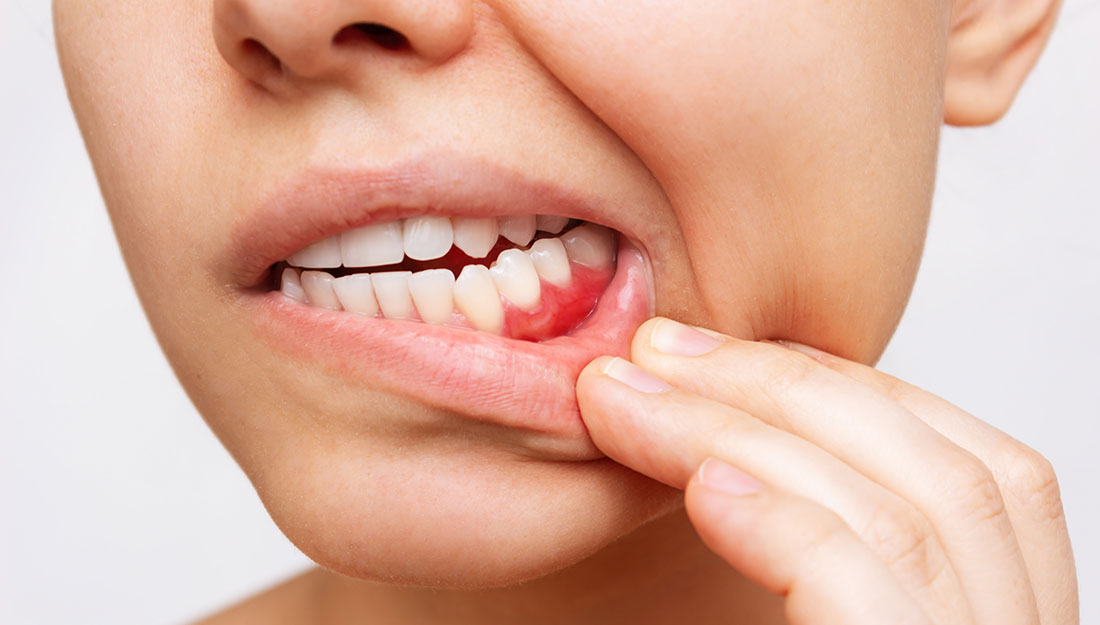Call 408-257-5950 • 19000 Cox Avenue, Suite A • Saratoga, CA 95070
Beyond Bleeding Gums: Understanding the Early Stages of Periodontal Disease

Have you noticed a little pink in the sink when brushing your teeth? While many people dismiss bleeding gums as a normal occurrence, it’s actually one of the earliest warning signs of gum disease. As dental professionals serving the Saratoga community, we’ve observed that many patients are unaware that this common condition affects nearly half of all American adults over 30 – and many don’t realize they have it until significant damage has occurred.
Understanding Gum Disease
Periodontal disease, commonly known as gum disease, begins when bacteria in plaque build up along and under the gum line. In its earliest stage, called gingivitis, the condition only affects the surface of the gums. However, if left untreated, it can progress to periodontitis, a more serious condition that damages the soft tissue and bone supporting your teeth.
Early Warning Signs You Shouldn’t Ignore
Visual Changes:
- Gums that appear red or purple instead of healthy pink
- Swollen or puffy gum tissue
- Gums that seem to be pulling away from teeth
- Teeth that appear longer than before (a sign of receding gums)
Physical Symptoms:
- Bleeding while brushing or flossing, even if gentle
- Tender or sensitive gums
- Persistent bad breath that doesn’t improve with brushing
- Subtle changes in how your teeth fit together
Often Overlooked Signs:
- Slight changes in your bite
- New sensitivity to hot or cold foods
- Small spaces developing between teeth
- A persistent metallic taste in your mouth
Common Myths About Gum Disease
Myth 1: Bleeding Gums Are Normal
Many people believe it’s normal for gums to bleed during brushing or flossing. The truth is, healthy gums don’t bleed. If you see blood when you brush or floss, it’s usually an early sign of gum inflammation.
Myth 2: Only Poor Oral Hygiene Causes Gum Disease
While oral hygiene plays a crucial role, other factors like genetics, medical conditions, and medications can increase your risk, even if you maintain good dental habits.
Myth 3: Gum Disease Is Only a Mouth Problem
Periodontal disease has far-reaching effects beyond your mouth. Research shows strong connections between gum health and overall wellness.
Myth 4: You’ll Know If You Have Gum Disease
Many people believe they’ll experience pain or obvious symptoms if they have gum disease. In reality, early stages often progress without noticeable discomfort.
Myth 5: Treatment Can Wait Until Problems Are Visible
Waiting until you see obvious problems often means the disease has already progressed significantly. Early intervention is key to preventing serious complications.
The Mouth-Body Connection: Why Gum Health Matters
Heart Health:
Studies suggest that people with periodontal disease have a higher risk of heart disease. The inflammation associated with gum disease may play a role in the development of cardiovascular problems.
Diabetes Management:
There’s a two-way relationship between diabetes and gum disease. People with diabetes are more susceptible to periodontal disease, while gum inflammation can make it harder to control blood sugar levels.
Respiratory Health:
Bacteria from infected gums can be aspirated into the lungs, potentially causing or worsening respiratory conditions.
Pregnancy Outcomes:
Pregnant women with gum disease may have a higher risk of pregnancy complications, making periodontal health especially important during pregnancy.
Cognitive Function:
Emerging research suggests possible links between gum disease and cognitive decline in older adults, though more studies are needed.
Treatment Options
Professional Care:
- Regular dental cleanings
- Deep cleaning procedures (scaling and root planing)
- Antibiotic treatments when necessary
- Monitoring and maintenance programs
Home Care Strategies:
- Proper brushing technique
- Daily flossing
- Antimicrobial mouth rinses when recommended
- Regular dental check-ups
The Cost of Waiting
Ignoring early warning signs of gum disease can lead to serious consequences:
- Tooth loss requiring expensive replacements
- Chronic bad breath that affects social and professional interactions
- Receding gums that create cosmetic concerns and sensitivity
- Increased risk of heart disease and other systemic health problems
- Expensive and extensive dental procedures that could have been avoided
- Potential complications with other medical conditions
- Impact on overall quality of life and self-confidence
Prevention: Your First Line of Defense
The good news is that gum disease is largely preventable with proper care:
- Brush thoroughly twice daily
- Floss daily to remove plaque between teeth
- Maintain regular dental check-ups
- Address risk factors like smoking
- Manage related health conditions
Taking Action
Remember, prevention and early intervention are key to maintaining healthy gums. At Saratoga Dentistry, we’re committed to helping our patients understand and treat gum disease at its earliest stages. Our experienced team provides thorough evaluations and personalized treatment plans to address your specific needs.
Don’t wait until gum disease progresses to an advanced stage. Contact Saratoga Dentistry today to schedule a comprehensive evaluation. Our caring team is here to help you maintain optimal oral health and a beautiful smile.
Serving Saratoga and surrounding Silicon Valley communities including Los Gatos, Cupertino, San Jose, and Campbell.
